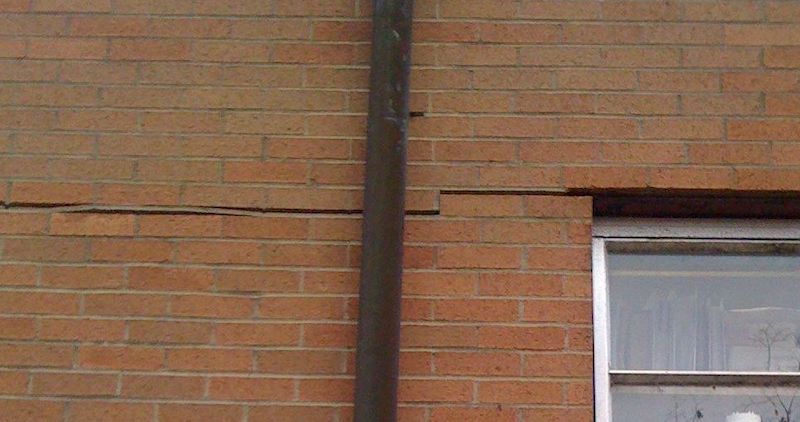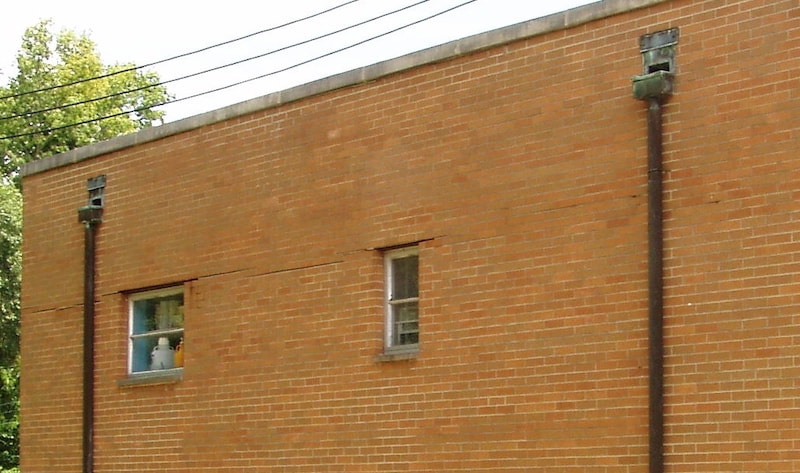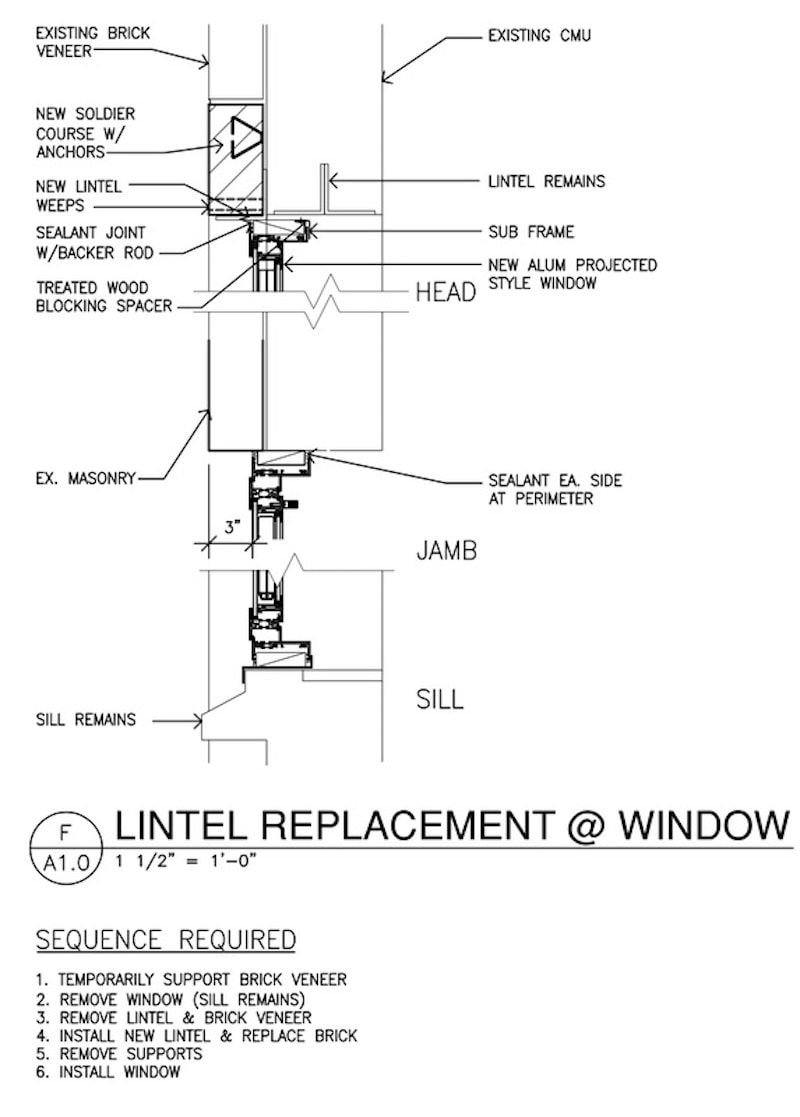|
Lintels in masonry walls may not last forever, unless … … you do it correctly. It is a mistaken notion that brick is waterproof. Historically this lack of water tightness was mitigated by the thickness of the masonry wall. The water that penetrated the exterior surface of the wall dissipated and eventually evaporated before it could travel to the inside surface. This lack of water tightness doesn’t matter when your lintels are made of stone or brick. Steel lintels are another matter. Unprotected steel rusts. In the picture above the 40 year old lintel was bare steel. In 40 years the 1/4” thick steel had become 1/2” thick. The formation of the rust heaved the masonry above, which in turn created more water penetration problems. In this case the plain steel lintels did not have flashing or weep holes to control the water that penetrated the brick. The heaved veneer caused large, long cracks to appear. The solution is simply a new lintel installed in proper fashion. Most masons can manage the support of the veneer above when the span is 3' to 6' as was the case here. The detail provide instruction for the sequence in which the repair should be made. The key features of the detail are:
Comments are closed.
|
x
Archives
February 2024
Categories
All
|
Architekwiki | Architect's Resource | Greater Cincinnati
© 2012-2022 Architekwiki
© 2012-2022 Architekwiki










